| Solar eclipse of July 23, 2036 | |
|---|---|
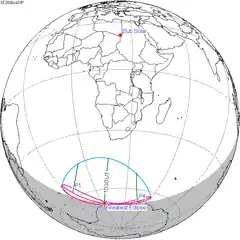 Map | |
| Type of eclipse | |
| Nature | Partial |
| Gamma | −1.425 |
| Magnitude | 0.1991 |
| Maximum eclipse | |
| Coordinates | 68°54′S 3°36′E / 68.9°S 3.6°E |
| Times (UTC) | |
| Greatest eclipse | 10:32:06 |
| References | |
| Saros | 117 (70 of 71) |
| Catalog # (SE5000) | 9588 |
A partial solar eclipse will occur on Wednesday, July 23, 2036. A solar eclipse occurs when the Moon passes between Earth and the Sun, thereby totally or partly obscuring the image of the Sun for a viewer on Earth. A partial solar eclipse occurs in the polar regions of the Earth when the center of the Moon's shadow misses the Earth.
Images

Animated path
Related eclipses
Solar eclipses of 2036–2039
This eclipse is a member of a semester series. An eclipse in a semester series of solar eclipses repeats approximately every 177 days and 4 hours (a semester) at alternating nodes of the Moon's orbit.[1]
Note: Partial solar eclipses on February 27, 2036 and August 21, 2036 occur on the previod lunar year eclipse set.
| Solar eclipse series sets from 2036–2039 | ||||
|---|---|---|---|---|
| Ascending node | Descending node | |||
| 117 | July 23, 2036 Partial |
122 | January 16, 2037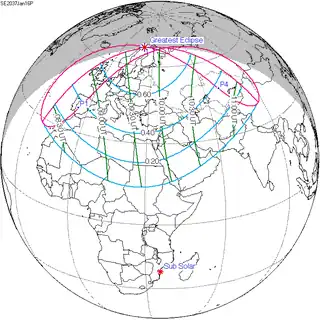 Partial | |
| 127 | July 13, 2037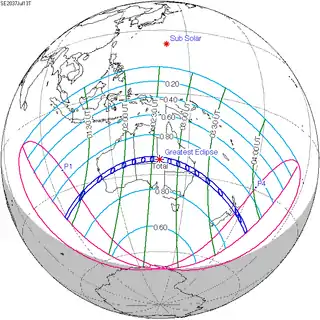 Total |
132 | January 5, 2038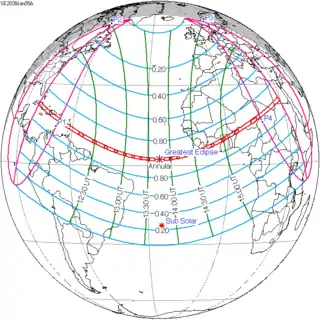 Annular | |
| 137 | July 2, 2038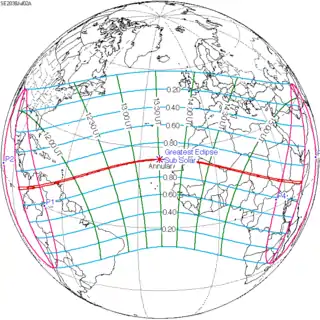 Annular |
142 | December 26, 2038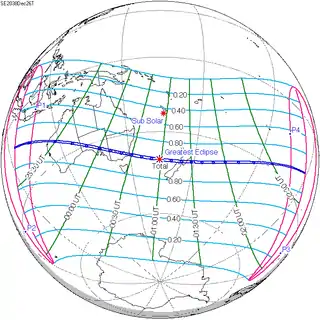 Total | |
| 147 | June 21, 2039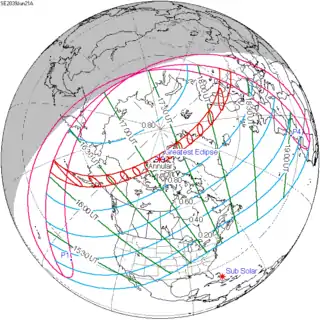 Annular |
152 | December 15, 2039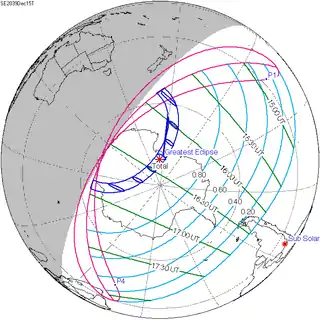 Total | |
References
- ↑ van Gent, R.H. "Solar- and Lunar-Eclipse Predictions from Antiquity to the Present". A Catalogue of Eclipse Cycles. Utrecht University. Retrieved 6 October 2018.
Wikimedia Commons has media related to Solar eclipse of 2036 July 23.
External links
This article is issued from Wikipedia. The text is licensed under Creative Commons - Attribution - Sharealike. Additional terms may apply for the media files.
.jpg.webp)

